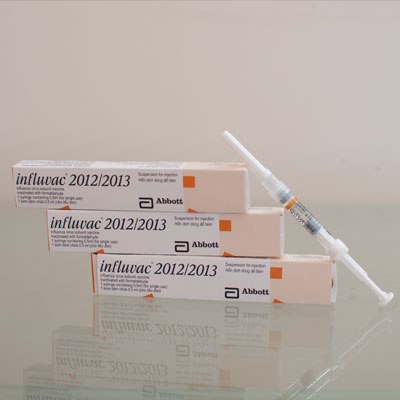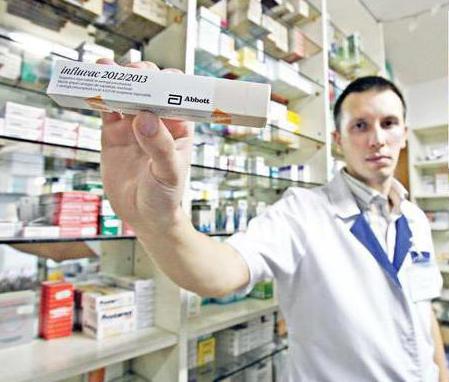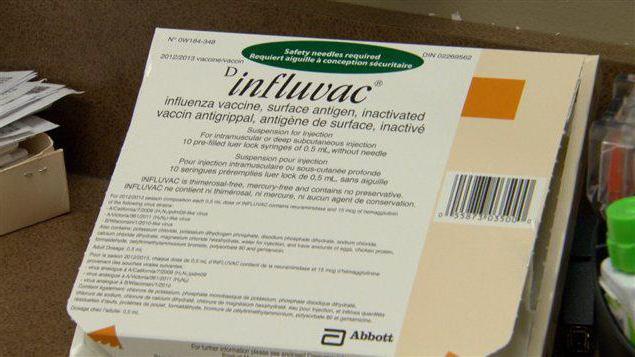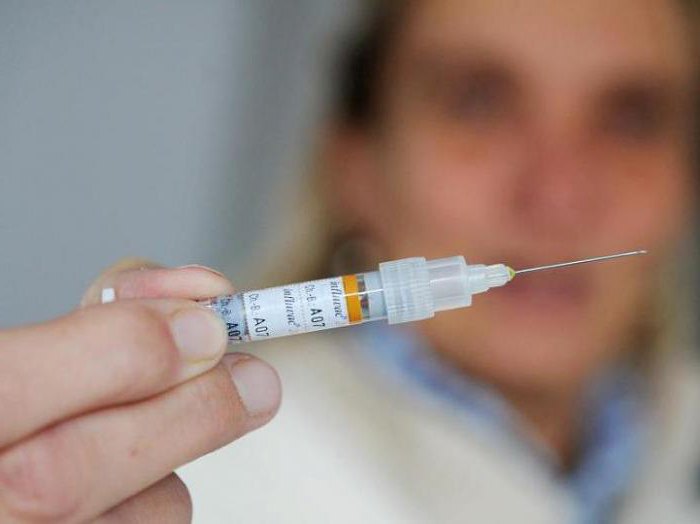Influvac and vaxigripp: which flu vaccine is better. Inactivated vaccine "Influvac": instructions for use. "Influvac": composition, analogues, prices, reviews.
Are you afraid of getting the flu? Then you should consider getting vaccinated. Thanks to this event, a person will maintain his health, not get sick with the flu or get sick, but in a mild form. Immunization is the right thing to do, especially when it comes to our kids. Therefore, today we will consider what the Influvac flu vaccine is, as well as Vaxigripp. These are common drugs used in Russia and Ukraine. They can prevent influenza infection. Below we consider the composition of both vaccines, their dosages. We also determine which of them will be better than the other.
Composition, form of release of the vaccine "Influvac"
This drug is sold as a suspension, which is administered subcutaneously or intramuscularly. The vaccine "Influvac" is sold in syringes, which should be disposed of after the injection. Needles are also included with the preparation.
The composition of this vaccine is as follows:
Hemagglutinin and neuraminidase of viral strains of types: A (H3N2), A (H1N1), B.
Auxiliary elements: dihydrate, potassium, calcium and hydrogen phosphate, water for injection.
Dosage of the vaccine "Influvac"
Adults, as well as children from 3 to 14 years old - 0.5 ml once.
Babies from 6 months to 3 years - 0.25 ml once.
For children who have never been vaccinated before, it is advisable to administer the drug twice with an interval of 4 weeks.
Immunization should be carried out once a year in the fall. 
Side effects after vaccination with Influvac
The use of this remedy may cause the following unwanted reactions:
From the side of the central nervous system: often - headache; rarely - neuritis, convulsions, neuralgia, encephalomyelitis, paresthesia.
From the side of the heart and blood vessels: rarely - vasculitis (immunopathological inflammation of the vessels).
From the musculoskeletal system: often - arthralgia (joint pain), myalgia (pain in the muscles).
General disorders: often - fatigue, fever, muscle and joint pain, malaise, trembling, chills.
Other manifestations: often - severe sweating; rarely - skin manifestations (itching, urticaria, nonspecific rash).
Local reactions: swelling, induration, soreness, redness.
Composition, form of release of the vaccine "Vaxigripp"
This drug is also a suspension for injection under the skin or intramuscularly.
The Vaxigripp vaccine is available in syringes or ampoules.
The composition of the drug is as follows:
The active elements are hemagglutinin and neuraminidase of such virus strains as A (H3N2), A (H1N1), B.
Auxiliary components - sodium, as well as dihydrogen phosphate, hydrophosphate dihydrate, water for injection. 
Rules for immunization and dosage of the drug "Vaxigripp"
This flu vaccine can be given:
Subcutaneously in the upper part of the front side of the shoulder.
Intramuscularly in the deltoid muscle.
For small children - in the anterolateral region of the thigh.
The dosage of the drug is as follows:
Adults and children from 3 years - 0.5 ml once.
Babies from six months to 3 years - 0.25 ml of the drug.
People who have not been vaccinated before, as well as those who have not had the flu at all, should be given this vaccine 2 times at an interval of 4 weeks. That is, one dose should be divided equally.
Patients with immunodeficiency should also be given the drug twice - 0.25 ml with an interval of 1 month. 
Side effects after vaccination with the drug "Vaxigripp"
This remedy also has negative effects. How to understand which vaccine - "Vaxigripp" or "Influvac" - is better? To do this, you can see a list of side effects of each drug. So, for the "Vaxigripp" tool, it is like this:
Often - headache, malaise, sweating, fatigue, muscle and joint pain, neuralgia.
Rarely - convulsions, paresthesia, neuritis, encephalomyelitis.
Very rarely - allergic manifestations on the body, vasculitis.
Local reactions - compaction, soreness, swelling at the injection site.
The cost of vaccines
The drug "Vaxigripp", the price of which varies in different pharmacies, can be purchased on average for 400 rubles. A person will have to pay such an amount for 1 dose of this remedy. I wonder how much then the drug "Influvac" costs? The price of this drug ranges from 520-570 rubles.
So what to choose?
To date, both vaccines are considered the most common flu vaccines for children and adults. Both drugs give the same result. However, parents do not stop terrorizing pharmacists and family doctors to advise which of the two vaccines - "Vaxigripp" or "Influvac" - will be better. The fact is that both drugs are almost indistinguishable from each other. Indications for use, form of release and even their composition is similar. But at a point like side effects, there is a difference. So, the means "Influvak" has much larger list possible negative manifestations, while in the case of the drug "Vaxigripp" this list is much shorter. If we consider the cost of these vaccines, then there is also something to cling to. The drug "Influvac" is somewhat more expensive than its competitor. Therefore, if you choose from these two criteria, then you should make a choice in favor of the Vaxigripp tool. The price is lower, and there are fewer side effects. But it's still better to find out what people think about these two vaccines, and based on their responses, decide for yourself what to choose. 
The drug "Influvac": reviews
Internet users write mostly only positive opinions about this tool. So, those patients who were vaccinated with this drug note that the injection itself is painless, because the needle in the syringe is very thin. It is also rare that anyone notes that after vaccination with this remedy, problems arose. People, on the contrary, praise the Influvac drug for the fact that it almost never causes unwanted reactions in the body. Also, women and men choose this particular vaccine, because it is imported, which means that it is better purified than domestic. In addition, the composition of the drug is improved every year, because new strains of influenza appear, so the developed immunity may not work. 
There are, however, negative responses from people. The first thing parents pay attention to is that Influvac is sold in a standard dosage. That is, it turns out that syringes are the same for both adults and children. This is very inconvenient, because if you make a vaccine for children, then the excess amount of the drug must be drained. It turns out that it is inefficiently spent. There are also people who note that after vaccination with Influvac, their health has deteriorated greatly. To prevent this from happening, it is necessary to inject only when the person is completely healthy. That is, no colds he shouldn't have. And if a person listens to the doctor and follows all his recommendations regarding vaccination, then the Influvac drug will receive only positive reviews. As for the cost of this tool, people note that its price is quite adequate, and it suits many.
The drug "Vaxigripp": reviews
This vaccine has positive feedback from patients. Some get an injection with this drug for free, others buy it at their own expense. However, both those and others note the effectiveness of this vaccine: during the year, people do not get the flu. True, there are exceptions when a person nevertheless catches this virus, but the disease proceeds much easier. Also, people note that although the drug "Vaxigripp" is not the best of the existing ones, it is affordable. And this is an important factor. After all, often all family members have to be vaccinated, and this can hit the family budget hard. Therefore, people choose a cheaper remedy - "Vaxigripp". Reviews positive also write parents who are satisfied that the drug is sold separately for children, that is, in special syringes of 0.25 mg. And don't need to pour excess liquid because the dosage is accurate. 
Expert opinion
And what do immunologists and pediatricians say about these vaccines? Which is better: Vaxigripp or Influvac? Doctors in this regard are unanimous. They believe that these drugs are approximately the same in their properties and effect. They do not single out any of them specifically. And the fact that the supposedly Influvac remedy is purer, this, according to doctors, is an insignificant sign that does not affect the production of immunity, as well as its perception by the body. Therefore, if at work they offer to carry out free vaccination, for example, with Vaxigripp, then it is advisable to agree. Since it is stupid to look for the Influvac drug in pharmacies, because these vaccines will be the same in terms of effectiveness. Well, if you do not have such an advantage, then indeed, you can purchase any of these two funds yourself. The main thing is to pay attention to the expiration date of the drug, as well as follow all recommendations for proper storage and transportation.
Now you know which of the two remedies - "Vaxigripp" or "Influvac" - is better. And they realized that in fact there is no difference in them. The nuance is that the first remedy can be sold in a special small dosage (for children). While part of the drug "Influvac" will have to be poured out, since the children need to inject only 0.25 mg, and 0.5 mg is in the syringe. Also, another point is that the Vaxigripp suspension is a little cheaper. Well, doctors do not allocate these funds, believing that they are approximately the same in terms of effectiveness.
Influenza vaccine, subunit, inactivated
Registration certificate:
in Russia: P No. 015694/01
in Kazakhstan: RK-BP-5-No. 000287
Dosage form:
suspension for intramuscular and subcutaneous administration
Compound:
Influvac ® is a trivalent inactivated influenza vaccine consisting of surface antigens (hemagglutinin (HA), neuraminidase (NA)) of influenza A and B viruses grown in chicken embryos. The antigenic composition of the influenza vaccine is updated annually according to the recommendations of the World Health Organization.
Active substances:
One dose of the vaccine (0.5 ml) contains HA and HA of the following viral strains:
| A/Brisbane/59/2007 / IVR-148, similar A/Brisbane/59/2007 (H1N1) * | 15 mcg GA |
| A / Uruguay / 716 / 2007 / NYMC X-175C, similar A/Brisbane/10/2007 (H3N2) * | 15 mcg GA |
| B/Brisben/60/2008, similar B/Brisben/60/2008* | 15 mcg GA |
* After the name of the strain, the name of the type recommended by WHO for the current influenza season is given.
Excipients:
Description
Clear colorless liquid
Immunological properties
The vaccine develops specific immunity to influenza A and B viruses, which is fully formed, as a rule, 14 days after vaccination and lasts up to 1 year.
Purpose
Prevention of influenza in adults and children from 6 months.
Vaccination is recommended for all individuals, and especially for the following categories of the population, who are at increased risk in case of combination of influenza with existing diseases:
persons over 65 years of age, regardless of their state of health;
patients with respiratory diseases;
patients with cardiovascular diseases of any etiology;
patients with chronic renal failure;
sick diabetes;
patients with immunodeficiency diseases (HIV infection, malignant blood diseases, etc.) and patients taking immunosuppressants, cytostatics, undergoing a course radiotherapy or receiving high doses corticosteroids;
children and adolescents (from 6 months to 18 years) who have been taking drugs containing acetylsalicylic acid for a long time and, therefore, are at an increased risk of developing Reye's syndrome due to influenza infection;
pregnant women in the 2nd and 3rd trimesters of pregnancy. Pregnant women belonging to high-risk categories should be vaccinated regardless of the gestational age.
Contraindications
Hypersensitivity to chicken protein or any other component of the vaccine, severe temperature or allergic reactions after previous vaccination with subunit influenza vaccines. Vaccination is delayed until the end of acute manifestations of the disease and exacerbation of chronic diseases. For non-severe acute respiratory viral infections, acute intestinal and other diseases, vaccination is carried out immediately after the establishment normal temperature at the patient.
Method of application and dosage
Dose for adults and adolescents (from 14 years of age): 0.5 ml. The vaccine is administered once.
Dose for children from 6 months. up to 3 years: 0.25 ml.
Dose for children from 3 to 14 years: 0.5 ml. The vaccine is administered once. For children who have not previously had influenza and have not previously been vaccinated, it is recommended to administer the vaccine twice with an interval of 4 weeks.
Patients with immunodeficiency are recommended to administer the vaccine twice with an interval of 4 weeks.
Mode of application.
Immunization is carried out annually in the autumn. The vaccine is administered intramuscularly or deep subcutaneously. It is strictly forbidden to administer the drug intravenously.
Interaction with others medicines and other forms of interaction
Influvac ® can be used simultaneously with other vaccines. In this case, vaccines should be administered to different parts of the body with different syringes. Possible increased side effects. If the patient is receiving immunosuppressive therapy, the immune response may be reduced.
After vaccination, it is possible to obtain false-positive results of serological tests with enzyme-linked immunosorbent assay (ELISA), which are due to the production of IgM after vaccination.
Use during pregnancy and lactation
Experience shows that Influvac ® does not have a teratogenic or toxic effect on the fetus. Vaccine Influvac ® can be used during lactation.
Side effects
From the circulatory and lymphatic system: rarely - thrombocytopenia.
From the immune system: in rare cases, allergic reactions are possible, in very rare cases - anaphylactic shock.
From the nervous system: often - headache, rarely - paresthesia, convulsions, encephalomyelitis, neuritis, Guillain-Barré syndrome. However, there is no convincing evidence that these reactions are related to vaccination.
From the vascular system: very rarely - vasculitis with transient renal dysfunction.
General disorders:
Often - fatigue, neuralgia, not requiring treatment and passing through 1-2 days. Local reactions: redness, swelling, soreness, induration, ecchymosis. Systemic reactions: fever, malaise, trembling, sweating, soreness in muscles and joints.
In the room where vaccination is carried out, it is necessary to have drugs to relieve anaphylactic shock (adrenaline, glucocorticoids, etc.)
special instructions
The drug may contain an undetectable residual amount of gentamicin, so caution should be exercised when vaccinating persons with hypersensitivity to aminoglycosides.
Influence on the ability to drive a car and control machines and mechanisms
Influvac ® does not affect the ability to drive a car and use machines and mechanisms.
Incompatibility
Cases of incompatibility of the drug Influvac ® with other drugs are unknown.
Package
0.5 ml in a disposable syringe with a capacity of 1.0 ml with a needle closed with a plastic cap. 1 or 10 syringes in a cardboard or sealed plastic holder. The cardboard holder is placed in a cardboard box with the control of the first opening, the sealed plastic holder is placed in a cardboard box. Also, instructions for use are included in the cardboard box.
Best before date
12 months The expiry date is June 30 of the year following the year of issue. The drug should not be used after the expiration date indicated on the package.
Storage conditions
In accordance with SP 3.3.2.1248-03 - in a place protected from light at a temperature of 2 to 8 ° C (do not freeze!)
In a place inaccessible to children.
Holiday conditions
A package containing 1 syringe is dispensed from pharmacies according to a doctor's prescription.
A package containing 10 syringes is sold by medical and preventive institutions.
Guidelines for Handling Disposable Syringes
Before administration, the vaccine must be warmed to room temperature. Shake the syringe just before injection. Remove the protective cap from the needle and remove air from the syringe by holding it in a vertical position with the needle up and slowly pressing the plunger. When introducing a dose of 0.25 ml, stop the movement of the syringe plunger at the moment when its inner surface reaches the lower edge of the needle retainer.
reviews 3
Influvac- subunit three-component vaccine of the third generation, the action of which is aimed at combating the influenza virus. Due to the content of only surface antigens without virus proteins and impurities, Influvac has a low reactogenicity with significant immunogenicity. Every year, different antigens of viruses (hemagglutinin, neuraminidase) are taken to create a vaccine. The choice of antigens is based on WHO recommendations, which indicate the viral strains of the upcoming season. Antigens provoke the production of specific antibodies to a particular strain of the virus. The antibody titer gradually rises and after two weeks reaches the required level sufficient to provide a specific immune response.In 95% of vaccinated patients, the formation of post-vaccination specific immunity is observed. When whole viral cells enter the body, they are recognized immune system, absorption by B- and T-lymphocytes, stopping the growth and reproduction of the pathogen. There is evidence that immunity works not only for influenza viruses, but also prevents the development of acute respiratory infections in almost half of cases. This is due to the similarity of the antigenic structure of viruses that provoke acute respiratory infections with the influenza virus. Post-vaccination immunity is not stable, its duration is up to 12 months. Weak immunogenicity was noted in children and the elderly.
Indications for use:
Influvac used to prevent influenza virus infection. Suitable for use in children of the first year of life with immune deficiency. Due to the increased risk of complications after influenza, Influvac vaccination is indicated for the following categories of the population: pensioners;
patients with existing pathologies of the respiratory and vascular systems, heart disease; patients with severe somatic pathologies (diabetes mellitus, chronic renal failure); patients with immunodeficiency as a result of diseases or taking immunosuppressants;
children undergoing constant therapy with drugs with acetylsalicylic acid to eliminate the likelihood of contracting the flu and developing the deadly Reye's syndrome; pregnant women at risk.
Vaccination is also indicated for people with an increased likelihood of contracting influenza (medical and pharmacy workers, teachers, workers preschool institutions etc.). The use of Influvac is possible in nursing mothers and children from six months.
Mode of application:
Vaccination Influvacom it is desirable to carry out in the beginning of autumn. The vaccination room should have emergency aid (adrenaline, epinephrine, glucocorticosteroids, etc.). Immediately before use, the vaccine is warmed to room temperature. The syringe is shaken, the protective cap is removed. Then, with the needle up, air is removed from the syringe by gentle pressure on the piston. To obtain a dose of 0.25 ml, the liquid is drained from the syringe, bringing the piston to a special risk. Enter Influvac intramuscularly or subcutaneously. In young children, injections are placed in the quadriceps femoral muscle, in all others - in the muscle of the shoulder. Influvac is not allowed to enter the vascular bed, so extreme caution must be exercised. In / in the introduction is strictly prohibited. Introduction to the gluteal muscle is not practiced.
The dose for children from 3 years of age and adults is a single vaccination using 1 dose of the drug (0.5 ml). For children from six months to three years - a single vaccination with the use of 0.25 ml of the drug. When vaccinating children who have not had influenza and have not been vaccinated before, a double vaccination of 0.25 ml is used (interval - 4 weeks). Adult patients with immunodeficiency are prescribed a double vaccination of 0.5 ml (the interval between vaccinations is 4 weeks).
Side effects:
Influvac- vaccine with low reactogenicity. Side effects are observed only in 5% of cases. They are mild and short-lived (1-2 days).
After the injection, a local reaction may be observed in the form of hyperemia, soreness, ecchymosis, induration, difficulty in moving the arm, leg (depending on the injection site). Perhaps an increase in lymph nodes in the immediate vicinity of the injection site. A nonspecific rash, urticaria, itching may appear. Occasionally there is a cough, fever.
The CNS and autonomic nervous system may respond to the vaccine. Perhaps the appearance of headaches, lethargy, neuralgic manifestations (paresthesia, myalgia, neuralgia, paralysis, convulsions). In extremely rare cases, paralysis of the respiratory center, encephalomyelitis develops. Rarely there are dyspepsia, increased sweating. Reinforcement possible inflammatory processes in the body (arthritis, vasculitis, pericarditis). Hematopoietic disorders may occur after the use of Influvac. In isolated cases, the development of transient thrombocytopenia, lymphadenopathy, anaphylactic reactions, angioedema was observed.
Contraindications:
Contraindications for vaccination Influvacom are: childhood up to 6 months; hypersensitivity to the components of Influvac; history of serious allergic reactions to vaccines; allergy to chicken protein; hypersensitivity to gentamicin, neomycin, polymyxin; exacerbation of any diseases (vaccination is carried out after reducing the severity of the process).
Pregnancy:
Application experience Influvac exists during pregnancy. According to authoritative data, there was no teratogenic effect and no toxic effects on the fetus. Officially allowed applications from the second trimester of pregnancy. The doctor may prescribe a vaccination even in the first trimester of pregnancy. This is possible if there is a potential threat to the life and health of a pregnant woman due to the influenza virus.
Interaction with other drugs:
When used simultaneously Influvac with other vaccines, there is a mutual increase in side effects. If there is a need for the simultaneous use of several vaccines, then injections are carried out in different limbs. Drugs with an immunosuppressive effect (cytostatics, glucocorticoids) weaken the immunogenicity of the vaccine. Mixing Influvac in the same syringe with other drugs due to possible unpredictable physical and chemical interaction unacceptable.
Overdose:
Overdose is impossible due to the exact dosing of the drug Influvac and use it only under medical supervision. There were no data on overdose during the entire existence of the drug.
Storage conditions:
Vaccine Influvac requires storage at temperature regime from 2 to 8 degrees Celsius. Freezing is not allowed. The place of storage should be protected from direct sunlight and children's access. The shelf life of Influvak is 12 months. The manufacturer has set an expiration date of June 30 of the year following the year of manufacture of the drug. AT exceptional cases transportation at temperatures up to 25 degrees Celsius is acceptable. The duration of transportation at this temperature regime should not exceed 24 hours.
Release form:
Influvac is available in patented disposable Dufarject syringes with a silicone-coated needle included. One dose syringe contains 0.5 ml of the substance in the form of a colorless transparent suspension.
Compound:
1 dose Influvac contains: 15 micrograms of hemagglutinin, a neuraminidase derived from influenza viruses grown on healthy chicken embryos. Antigens of three influenza viruses are taken (two types A and one type B).
Excipients in the Influvac preparation: potassium chloride, potassium dihydroorthophosphate, sodium phosphate (in the form of a dihydrate), sodium chloride, dihydrated calcium chloride, magnesium chloride hexahydrate, sterile water.
Additionally:
In the post-vaccination period, it is possible to obtain false positive tests with ELISA. Positive serological reactions are due to the production of immunoglobulins after vaccination.
The drug Influvac does not affect the ability to work with mechanisms, but the possibility of side effects should be taken into account. It is neurological side effects that can change the concentration of attention, affect the ability to drive a vehicle normally.









